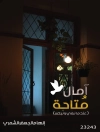In the popular imagination, the Holy Grail – part of the legendary romance of King Arthur – belongs to the realm of myth. The Knights Templar also have a legendary, enigmatic aspect. Despite the immense volume of historical research available, plausible explanations to the ‘mystery’ at the core of their practices have yet to be revealed.
By studying these two themes side-by-side and showing their inner relationship, Veltman reveals valuable new perspectives. On the one hand he demonstrates that the ‘poetic imagination’ of the Grail mystery has its origin in concrete historical events; and on the other hand, that the true history of the Knights Templar is, essentially, esoteric.
Combining historical research with insights gained from the work of Rudolf Steiner, Veltman presents an impressive survey of the subject, beginning with the pre-Christian Mysteries and ending with a vision of Michaelic Christianity. He analyses the significance of the holy city of Jerusalem, the Temple of Solomon, the Temple Legend, the Grail Temple, the Rosicrucians, the Templars’ gold, and the fraught question of evil. In addition, he sketches the continuation or metamorphosis of the Grail and Temple impulses into the future, including the critical ‘balancing’ role of Europe between East and West. To become effective, this important European task – which, he says, is continually being thwarted – must be properly understood within the realm of human consciousness.
عن المؤلف
W.F. VELTMAN was born in Den Haag, Netherlands, in 1923. He discovered anthroposophy during the period of Nazi occupation, and later worked at a Waldorf school for 41 years where he taught French, Art History and the Humanities and directed many theatrical productions. Mr Veltman gave many lectures in the Netherlands and abroad and published books on cultural and historical subjects including Dante, Shakespeare, Goethe and Victor Hugo and wrote hundreds of articles for the educational magazine Vrije Opvoedkunst (‘Free Education’). He died in 2018.












